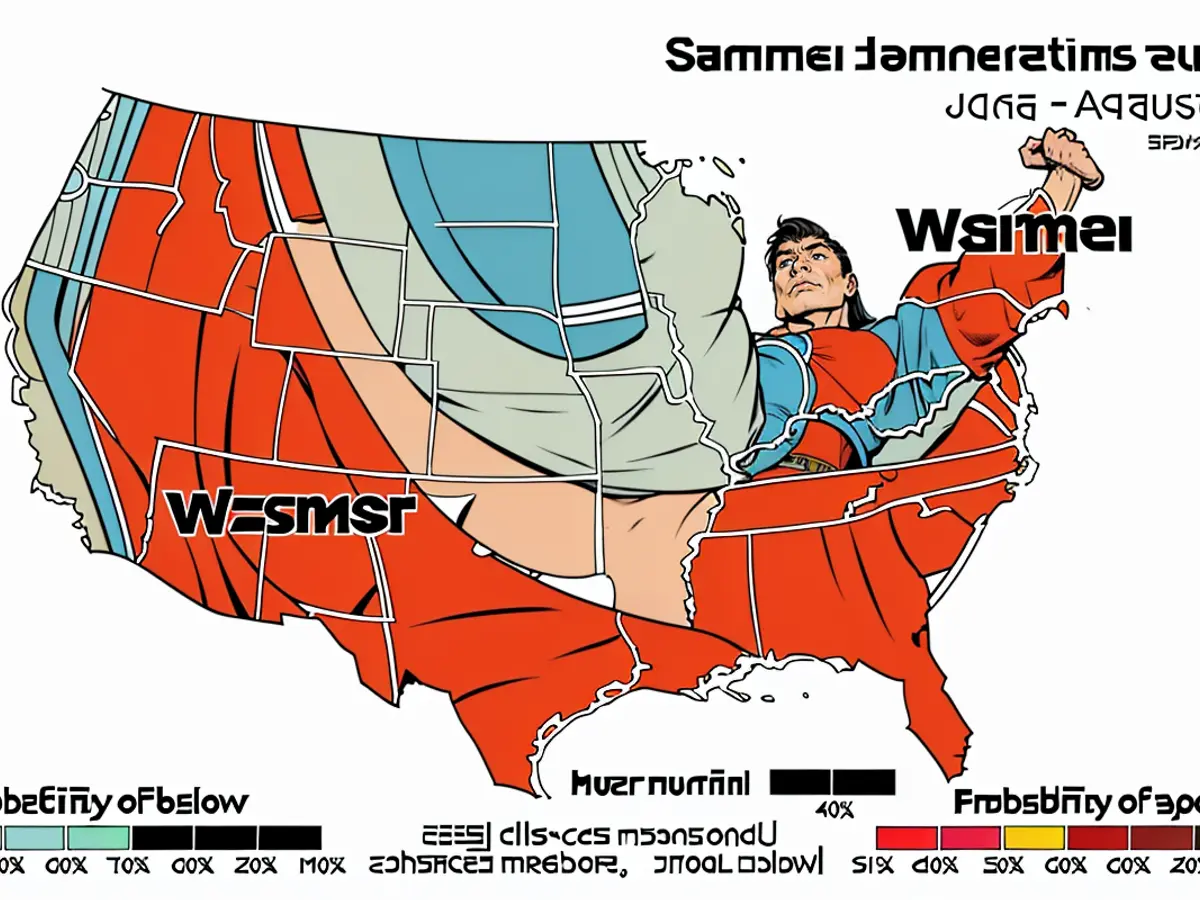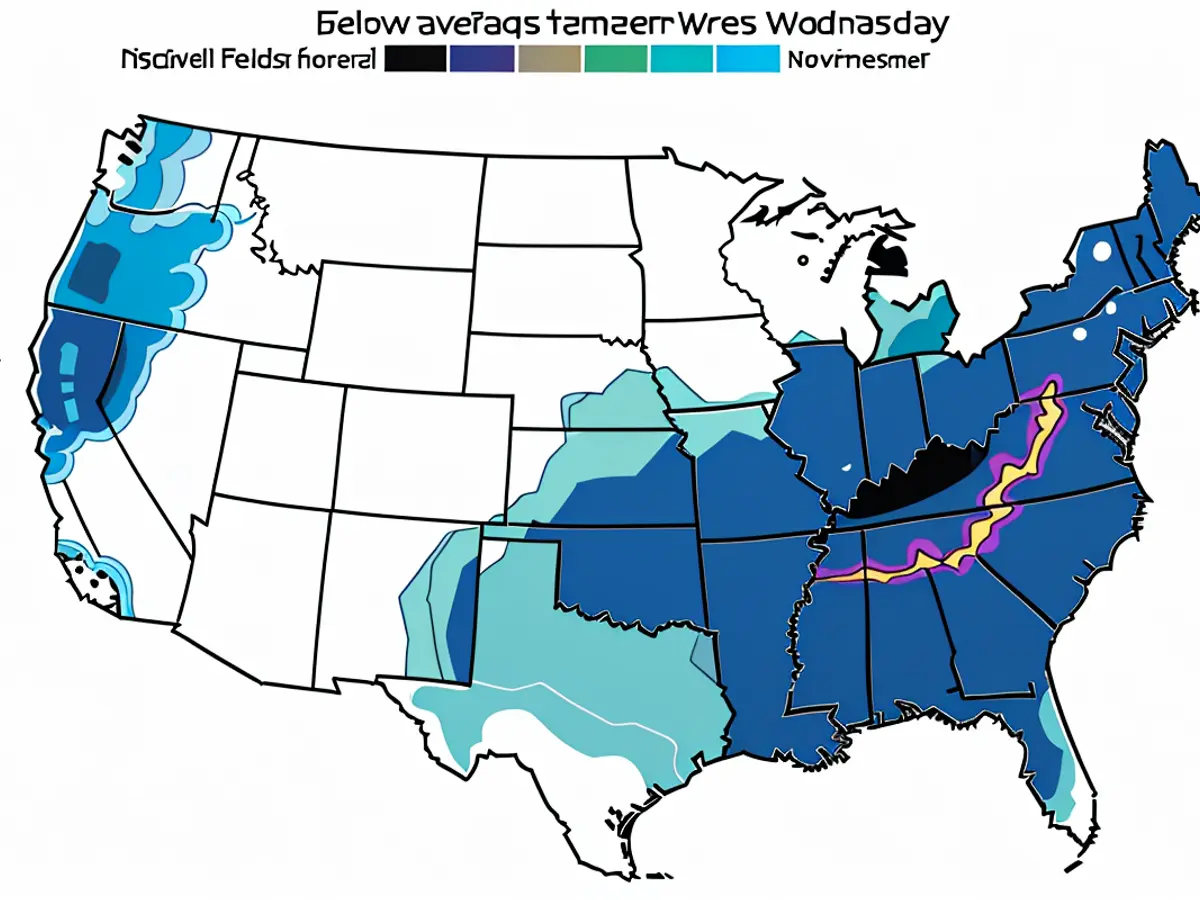El Niño has ended. Here's what lies ahead in the next few months.
El Niño - a natural climate pattern characterized by warmer-than-average ocean temperatures in the tropical Pacific Ocean - has dominated the planet since last summer's beginning. It reached super strength status earlier this year, contributing to record-breaking temperatures as well as influencing various global weather events.
Now that El Niño is taking a backseat, its counterpart, La Niña, is preparing to make its entrance later this summer. Currently, both La Niña and El Niño aren't present, leading us into a neutral phase, as stated by NOAA’s Climate Prediction Center. However, due to the buildup of La Niña, it's expected to be well established by September, which coincides with peak hurricane season.
The following is what a La Niña-dominated summer without El Niño could entail.
Scorching summer, active Atlantic
La Niña summers following robust El Niño winters tend to be amongst the hottest on record in the United States. This summer might follow suit even before La Niña fully takes over.
Temperature anomalies suggest a scorching summer ahead for almost the entire Lower 48. The heatwave has already made its debut in the West with a scorching July-like spell spreading over the eastern half of the country.
The shift towards La Niña isn't the only contributing factor influencing temperatures during the hottest time of the year. The world's warming landscapes due to fossil fuel pollution also play a significant role.
In addition, seasonal predictions show alarming changes in precipitation patterns for the western half of the U.S. Dryness and heat are cyclical. As an area grows hotter, it becomes even drier, possibly leading to new or more severe drought. Heat magnifies as most of the sunlight's energy goes into heating the ground, with little energy dissipated by soil evaporation.

The absence of El Niño will also impact the Atlantic Ocean with severe implications. The absence of El Niño contributes to a hyperactive hurricane season as it previously countered storm development and redirected many towards the Caribbean while staying away from the US coast.
On top of the La Niña effect, record-breaking Atlantic waters facilitate storm formation, intensification, and survival.
The Atlantic isn't the only body of water experiencing abnormally warm temperatures. El Niño is responsible for driving global average ocean temperatures to unprecedented levels over the past year. Although La Niña could reduce the ocean's temperature slightly, it won't occur immediately given the oceans’ slow heat-losing capabilities.
Given that up to 90% of heat generated by the burning of fossil fuels accumulates in oceans, the cooling process takes time, especially when considering the sheer quantity of trapped warmth.
El Niño's lingering effects
El Niño emerged in June 2023 and reached remarkable intensity levels, becoming one of the strongest ever recorded. Its presence influenced several significant weather events over the last year.
Pet when both air and ocean temperatures reached record levels. British, with stretching back to June 2023, was the warmest such period on record.

Global ocean temperatures first hit record-breaking heights in March 2023 and have consistently remained at historic levels since.
El Niño's impact is evident in various weather events since last summer. It likely contributed to remarkably dry and hot conditions in northern South America, leaving the Amazon River at an all-time low in October. An unseasonably warm winter struck the U.S. Lower 48, and widespread drought impacted central and southern Africa this past winter.
Parts of Africa's east coast would typically witness increased rainfall during El Niño periods; however, excessive precipitation resulted in devastating effects in Kenya in April and May.
California and the western US usually glean additional rainfall during El Niño. This past winter bore witness to numerous powerful atmospheric rivers hitting the West Coast.
Although analyzing El Niño's full impact on the last 12 months is still underway, the aforementioned occurrences demonstrate the phenomenon's far-reaching consequences.
CNN’s Laura Paddison contributed to this report.

Read also:
Despite the end of El Niño, its remnants are still causing record-breaking temperatures in various parts of the globe.
The absence of El Niño's cooling effects will contribute to a hyperactive Atlantic hurricane season, as observed in previous years.








